817 Search Results for praactical teaching
May 19, 2012
by Carole Zangari -
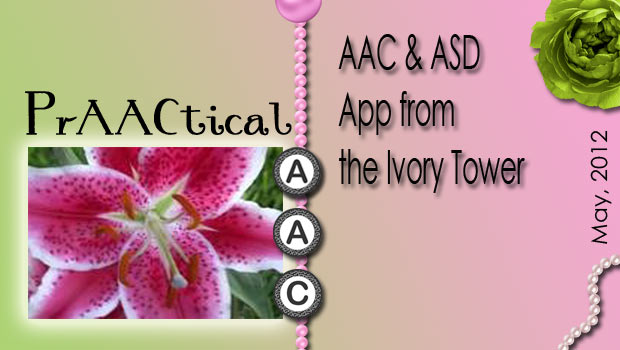
Today we pass the reins to Dr. Oliver Wendt from my alma mater, Purdue University. Purdue’s AAC program has made a great many contributions to the field and the tradition continues with the development of SpeakAll, an AAC app modelled after the PECS strategy. In this post, Dr. Wendt explains how a service-oriented project came to benefit so many individuals with significant communication difficulties. — – SpeakAll! An iPad App Addressing Particular Needs of Learners with Autism – An interdisciplinary team of Purdue University students from engineering, special education, and speech-language pathology has developed a simple and “lite” iPad app that takes into account the particular learning characteristics of beginning communicators with autism. This particular Purdue program is titled “Engineering Projects in Community Service” (EPICS). – The free app is called SpeakAll! and is available for download at the iTunes store here. SpeakAll! has been modeled after the Picture Exchange... [Read More...]
May 16, 2012
by Carole Zangari -
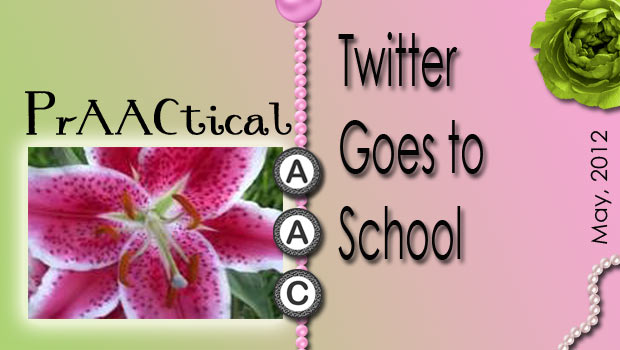
Since Robin has been doing such an awesome job of talking about Twitter and sharing AAC-friendly Twitter resources, I thought today we’d shift gears slightly and talk about applications for the classroom. – 1.If you’re new to Twitter, you may want to start with this helpful post on GeekSLP. 2. Great ideas for using Twitter in the K-12 classroom, many of which can be adapted for SLPs. 3. More ideas on how to use Twitter for teaching and learning 4. Beyond K-12 Twitter is just as useful. Here are some great resources for using it in Higher Education from Edudemic and Web 2.0 Teaching Tools 5. Twitter Professors: 18 People to Follow for a Real Time Education http://on.mash.to/IS5rej –
May 15, 2012
by Carole Zangari -
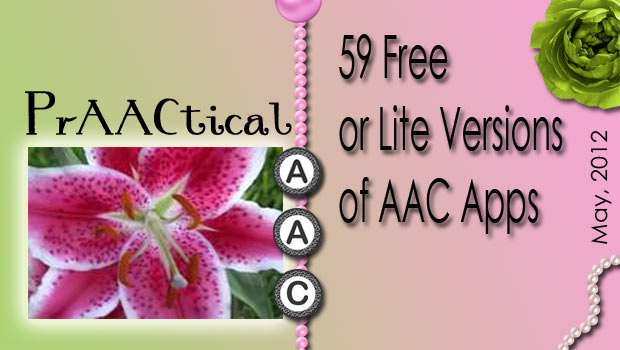
The content of this post has been updated. Click HERE for the most current version that includes Android apps and a link to our AAC app rubric. —– Thanks to all who’ve given us great feedback and suggestions on our list of free and lite AAC apps. If you’ve been following our blog, you know that we have mixed feelings about the AAC app revolution. More specifically, we’ve had concerns about the decision-making process around app selection, and have advocated for that to occur within the context of a feature match process that gives appropriate attention to the full range of AAC options. In our digital curation sites, we link to tools we use for this process, such as the feature match forms developed by Jessica Gosnell at Boston Children’s and the ones created by Scott Marfilius and Kelly Fonner. In our own teaching and clinical work, when AAC apps... [Read More...]
May 13, 2012
by Robin Parker -
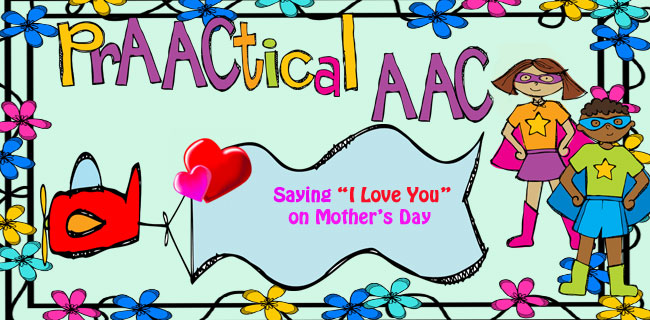
Saying “I Love You” is very important to most moms (and dads), especially on Mother’s Day (& Father’s Day). I never need to receive a mother’s day present from my son….. he is my present….. he was born on Mother’s Day (18 years ago). I feel like he is my never-ending perfect gift. He says “I love you” often, even at 18. So mixing this sentiment with my work, it saddens me to hear people say, my daughter does not “talk”, I only wish she could say “I love You“. I have learned that with AAC strategies, ALL children can say “I love you”. Here are some ways to help children (adults) ‘say’ it more often, in a conventional way, and so everyone can hear it. Record “I Love You” on a one hit message device/card/picture (Record with #1- your child’s voice, #2 same aged matched peer, or #3... [Read More...]
April 28, 2012
by Carole Zangari -
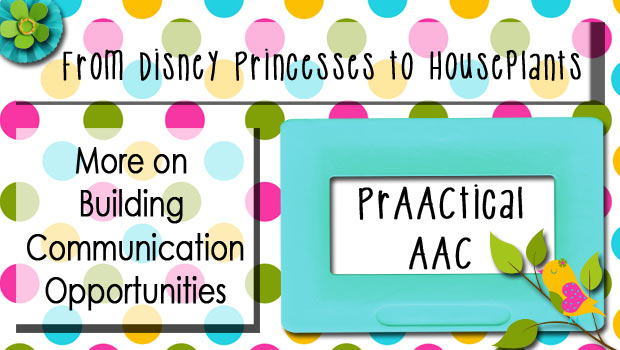
Mining everyday routines at home, in school, and in therapy sessions for communication teaching opportunities is a great way to get started in boosting the effectiveness of AAC intervention. We are inspired when we see clinicians enhance their clients’ learning by making subtle, but important changes. – I was thrilled to hear one SLP talk about how she ‘found’ more AAC practice for a teenager by offering more choices in her therapy games. Once he chose a TV character for the activity, LeVon then had to specify what action he/she would do (e.g., dance, drive, clap) and a location in which to do it (e.g., home, school, beach). Agent, action, location. Hmm…sounds like a good start for sentence-building, with a little aided language input and expansion thrown in for good measure. “Quinn drive beach.” “Yes. Quinn drove to the beach in his truck.” And it gives us great pleasure to... [Read More...]
April 27, 2012
by Carole Zangari -

1. My Smart Hands has resources on their website and also a sign dictionary app. (There’s a Lite version, too.) 2. Sign to Talk: ASL signs (150 nouns and 40 verbs) 3. ASL Dictionary: Over 4800 ASL signs 4. Sign 4 Me: Translates from English to Signed English, ASL 5. iASL: Conversion from English to ASL 6. ASL Lite: Free Android app with 100 ASL signs 7. iSign: 800+ ASL phrases 8. Signing Time Lite: Free flashcard-type app for teaching signs to young children 9. Sign Me a Story: Signed stories for little kids 10. Baby Sign and Learn: Free app for teaching signs to young children. Choose from various sign languages: American Sign Language (ASL), Australian Sign Language (Auslan), British Sign Language (BSL), Hong Kong Sign Language (HKSL) and New Zealand Sign Language (NZSL). – –
April 24, 2012
by Carole Zangari -
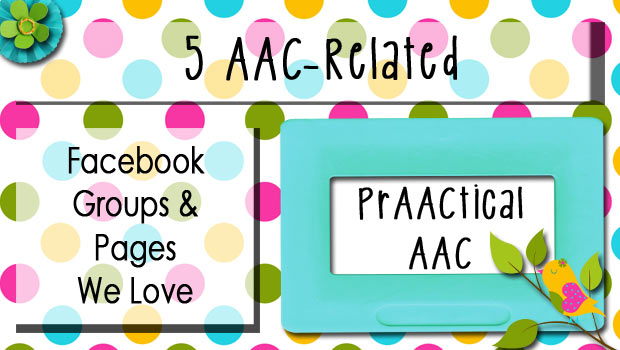
– We’re still getting used to the whole idea that social media sites, like Facebook and Twitter, can play such a powerful role in professional development. In addition to our our very own Facebook page, we, regularly visit a number of others for AAC and related content. – Augmentative Communication Resources and Help Boardmaker Sharing Group Raising and Teaching Individuals with Severe Disabilities Assistive Technology Technology in Education – How about you? What Facebook groups/pages do you find helpful? –
April 11, 2012
by Carole Zangari -
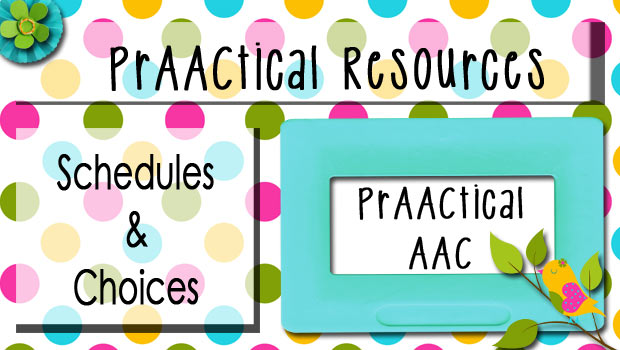
– If you follow our blog, you know that last month we had lots to say on making, teaching, and using Visual Schedules. We ran out of time before we could discuss a question that comes up a lot in our own clinical practice. What role does choice-making play in visual schedules? Here are some of the things we think about when we consider this for the schedules we make and use. We all like to have some say in what we do. Giving the learner an opportunity to make choices in a schedule makes sense when personal autonomy is a priority. Allowing the learner to choose which activities to place on the schedule supports personal autonomy: Having control over what happens in our lives is a big part of happiness for most people. – Here’s how we might do that with a visual schedule for a therapy session. 1.Select... [Read More...]
April 7, 2012
by Robin Parker -

Toca Boca App Developers make general education preschool apps. They are dedicated to providing interactive play opportunities using mobile technology. We have loved every one of their apps since we first saw them. There seems to be some philosophical similarities between the Toca Boca Apps and so we will begin with why we love ALL of them. We have found them to be engaging to all ages (including us). They also provide practice and interaction with life experiences in a fun and pretend tech way. We love the beautiful artwork. We love that they are reasonably priced, often participate in ‘give aways’ and they even do free GIFTS (think Toca Hair Salon Christmas Gift and now Toca Kitchen Monsters). We use these apps so often that we can say we have officially HijAACked them for PrAACtical AAC. We have HijAACked ALL of these apps to use with AAC... [Read More...]
April 7, 2012
by Carole Zangari -
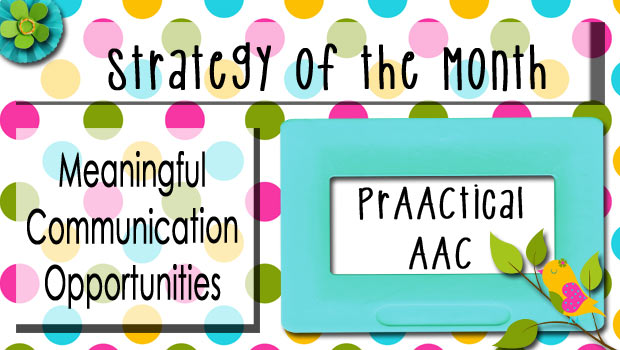
April is springtime where we live and spring is a time of beginnings. It’s fitting, then, that our AAC strategy of the month speaks to the very beginning of AAC intervention. Learning how to create focused opportunities to teach or practice an AAC skill is a pivotal skill for SLPs. The concept is a simple one: create an environment in which the learner WANTS or NEEDS to display the target skill. – Communication opportunities are related to the concept of communicative temptations. As SLP blogger Becca Jarzynski of Child Talk puts it “Communication temptations are pretty much just what they sound like: we set up the environment to tempt children to communicate with us.” Stop by and read her excellent post here . While Becca focuses on their use with young children, the approach can be used with people of any age. – Tempting people to communicate is all about... [Read More...]









